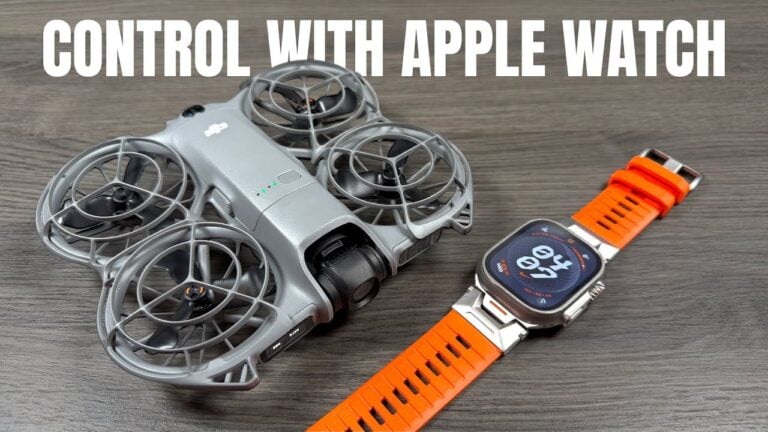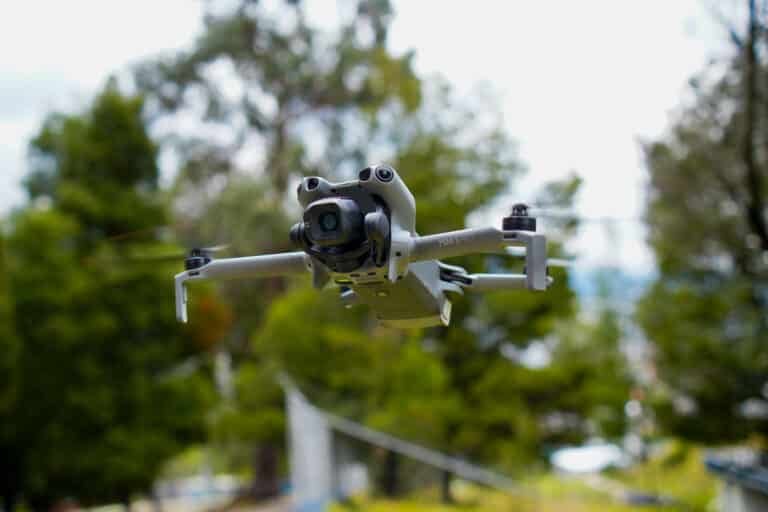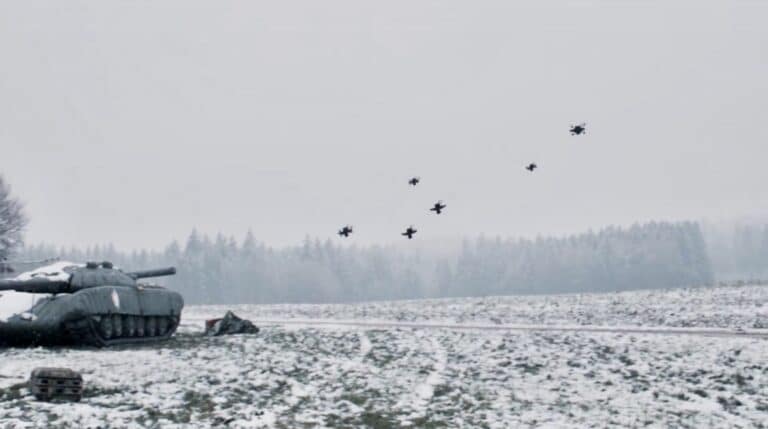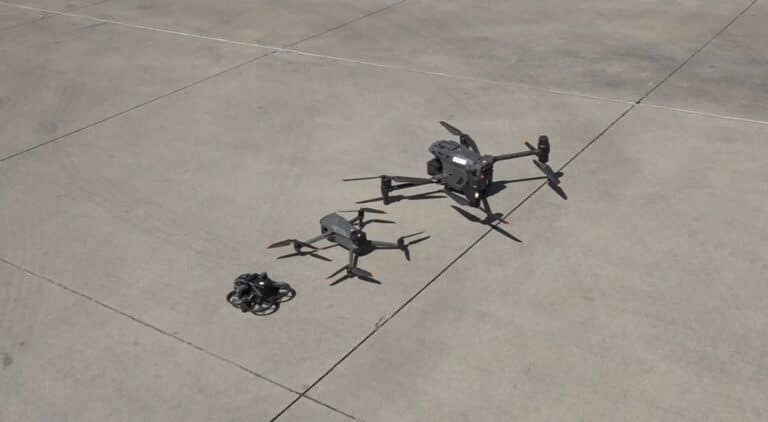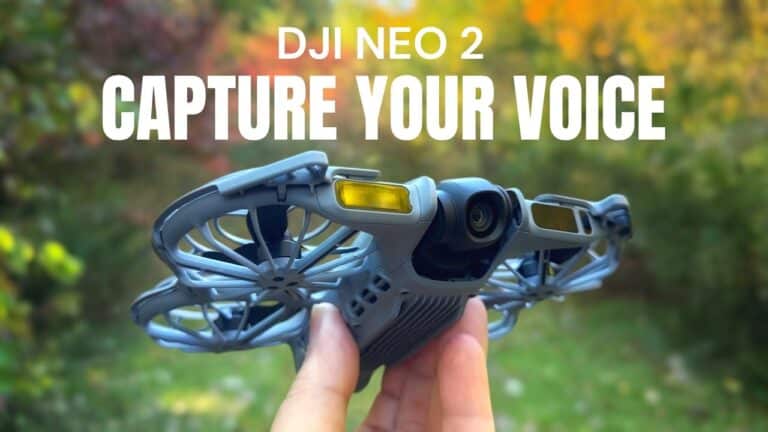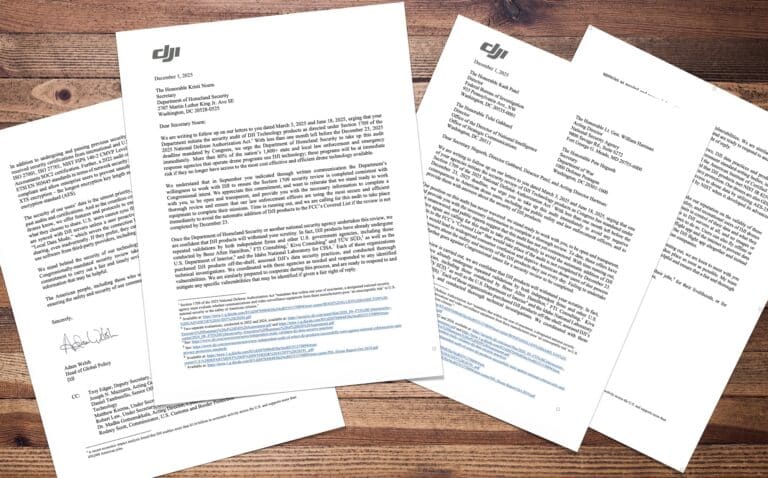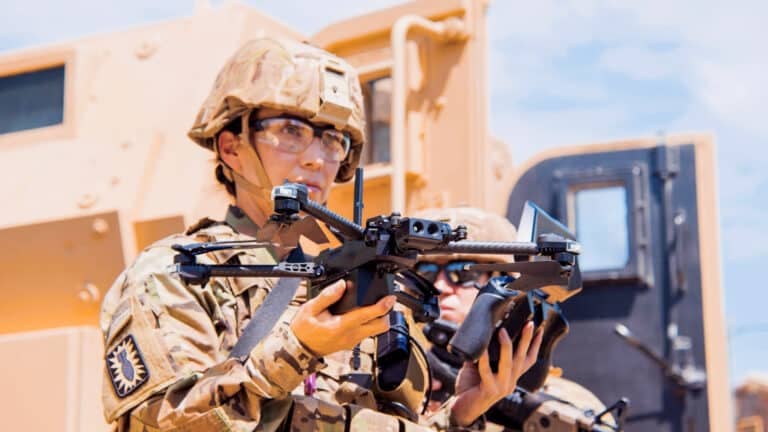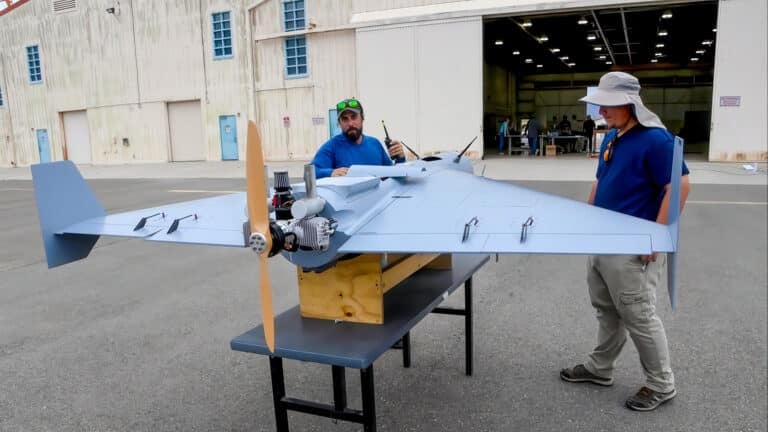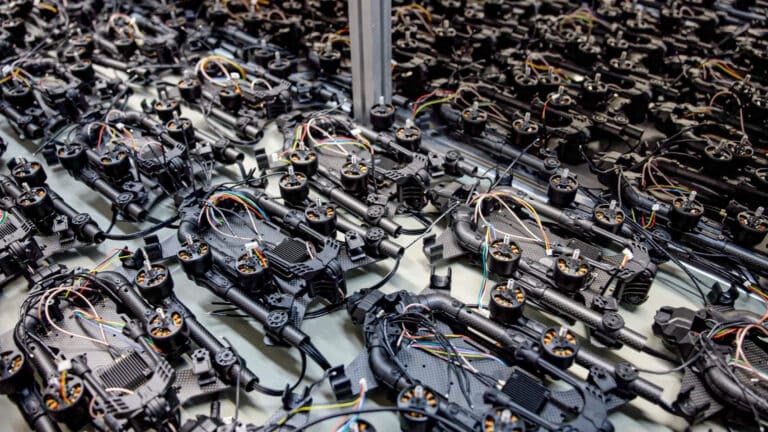EAVision J150 Spray Drone Conquers Steep Terraced Fields with Automotive-Grade Terrain Following

Amazon Drone Deals: DJI Mini 5 Pro Fly More Combo with DJI RC2 now for $1,099!
Agricultural spray drone distributor Agri Spray Drones has demonstrated the EAVision J150’s advanced terrain-following capabilities on steep grassback terraced fields that have historically challenged agricultural drone operations. The demonstration showcases sensor technology borrowed from the automotive self-driving car industry now being applied to agricultural aviation.
Taylor Moreland, founder and CEO of Agri Spray Drones, conducted the field test to highlight what he describes as groundbreaking terrain-following capability that makes previously impossible spraying jobs not just possible, but operationally efficient.
Automotive-Grade LiDAR Enables Steep Terrain Navigation
The J150 spray drone successfully navigated a challenging field featuring grassback terraces—steep earthen steps used for erosion control—while maintaining consistent altitude and spray coverage. Moreland configured the drone to spray at 2 gallons per acre, traveling at 45 feet per second (30.5 mph) while maintaining 12 feet over the crop canopy with 32-foot route spacing.
“We put this in a lot of situations where we had high degrees of slope at high speeds at high payloads and it’s always impressed us,” Moreland said in the demonstration video. “It’s hard to really get that on camera.”
The J150 maintained a minimum altitude of approximately 10 feet throughout the run, reaching a maximum of 18 feet as it traversed valleys and climbed hillsides. The drone sprayed approximately 19.5 gallons from its 20-gallon tank capacity while maintaining speed and altitude consistency that would be challenging for earlier agricultural spray drone systems.
Triple Radar Array Plus Self-Driving Car LiDAR
The J150’s terrain-following system combines three active radar arrays with automotive-grade LiDAR technology. The drone features one radar on the rear for downward and rearward obstacle detection, one on the front nose for forward and side sensing, and one on top for upward detection—providing 360-degree environmental awareness.
The front-mounted LiDAR comes from the same company that manufactures sensors for self-driving cars, according to Moreland.
“This is an automotive grade LiDAR made for autonomy and made for self-driving and made for AI path planning,” he explained. “So, the same technology is going into self-driving cars that go 70 mph down the freeway looking for obstacles and cars and pedestrians around them is the same technology inside of the J150.”
The sensor fusion system processes terrain data in real-time through AI path planning algorithms. During the demonstration, the drone’s display showed both horizontal and vertical radar readouts, with the vertical display revealing the drone’s planned flight path as it calculated routes up and down hillsides several seconds in advance.
Grassback Terraces Present Unique Challenge
Grassback terraces posed a particular challenge because their steep angles caused the J150’s obstacle detection system to initially identify them as obstacles rather than terrain features. Moreland addressed this by disabling the “intelligent bypassing” feature in the drone’s perception settings.
“That way it recognizes things in front of it as part of the terrain not necessarily as an obstacle,” Moreland noted. The adjustment allowed the drone to treat the steep terraces as part of the landscape topology rather than flight-stopping barriers.
The J150 also features an “ascend only” entry and exit mode that maintains a minimum altitude of 15 feet (4.6 meters) without descending into valleys during approach and departure. This prevents the drone from wasting battery power on unnecessary altitude changes while maintaining safe clearance from terrain.
Real-World Testing Before Commercial Launch
Agri Spray Drones put the J150 through extensive field testing before its commercial introduction. Moreland revealed at the 2025 Farm Progress Show in August that the company had accumulated over 11,000 acres of operational testing on at least one J150 unit before launching the product to customers.
“Every drone brought to market, whenever it’s announced, nobody has tested them,” Moreland told Farm Equipment magazine. “What we wanted to do, before we actually launched it, let’s get over 10,000 acres on at least one unit.”
The demonstrated flight consumed approximately 60% of battery capacity while spraying a full tank across the challenging terrain, leaving 40% remaining—suggesting strong operational efficiency for steep-field applications that would require multiple passes or manual spraying with traditional ground equipment.
Technical Specifications and Market Position
The EAVision J150 features a 20-gallon (75.7-liter) spray tank capacity or can be configured with a 180-pound (81.6-kilogram) spreader system. The drone has a maximum takeoff weight of 328 pounds (149 kilograms), including a 45-pound (20.4-kilogram) battery. Its 63-inch propellers generate 165 pounds (75 kilograms) of thrust per motor.
Agri Spray Drones partnered with Chinese manufacturer EAVision in December 2024 after working exclusively with DJI agricultural drones for four years. EAVision, founded in 2015 with scientists from Tesla and Intuitive Surgical, specializes in binocular vision technology and AI autonomous control systems.
The J150 competes against DJI’s Agras T40, which uses active phased array radar combined with binocular vision for terrain following with up to 50-meter detection range. However, the J150’s LiDAR-first approach represents a different sensor fusion strategy borrowed from automotive autonomy rather than traditional drone obstacle avoidance systems.
DroneXL’s Take
The J150’s terrain-following demonstration represents more than incremental improvement—it’s a technology crossover moment where automotive autonomy systems prove their value in agricultural aviation. Grassback terraces have historically been either no-go zones or extremely challenging terrain for spray drones, requiring experienced pilots to manually override automation or simply giving up and reverting to ground-based equipment or manual labor.
What’s particularly notable is Moreland’s emphasis on real-world validation before commercial launch. The agricultural drone industry has been plagued by products that work impressively in controlled demonstrations but fail under the stress of daily commercial operations. By accumulating 11,000 acres of operational data before the Farm Progress Show reveal, Agri Spray Drones is taking a more mature approach to product introduction that should reduce the early-adopter pain that has characterized previous ag drone generations.
The automotive-grade LiDAR strategy also signals where agricultural drone technology is heading. Self-driving car companies have invested billions in sensor fusion systems that must work flawlessly at highway speeds in complex environments. Adapting these proven systems for agricultural drones at lower speeds but in equally challenging terrain conditions makes technical and economic sense—particularly as LiDAR costs continue to decline due to automotive industry volume production.
For operators working in hilly terrain, orchards, or vineyards with significant topography, the J150’s demonstrated capability opens up revenue opportunities that were previously impractical or impossible with earlier spray drone technology. The question now is whether EAVision’s manufacturing and support infrastructure can scale to meet demand in the U.S. market as agricultural drone adoption accelerates beyond early adopters into mainstream farming operations.
What do you think? Share your thoughts in the comments below.
Discover more from DroneXL.co
Subscribe to get the latest posts sent to your email.
Check out our Classic Line of T-Shirts, Polos, Hoodies and more in our new store today!

MAKE YOUR VOICE HEARD
Proposed legislation threatens your ability to use drones for fun, work, and safety. The Drone Advocacy Alliance is fighting to ensure your voice is heard in these critical policy discussions.Join us and tell your elected officials to protect your right to fly.
Get your Part 107 Certificate
Pass the Part 107 test and take to the skies with the Pilot Institute. We have helped thousands of people become airplane and commercial drone pilots. Our courses are designed by industry experts to help you pass FAA tests and achieve your dreams.

Copyright © DroneXL.co 2025. All rights reserved. The content, images, and intellectual property on this website are protected by copyright law. Reproduction or distribution of any material without prior written permission from DroneXL.co is strictly prohibited. For permissions and inquiries, please contact us first. DroneXL.co is a proud partner of the Drone Advocacy Alliance. Be sure to check out DroneXL's sister site, EVXL.co, for all the latest news on electric vehicles.
FTC: DroneXL.co is an Amazon Associate and uses affiliate links that can generate income from qualifying purchases. We do not sell, share, rent out, or spam your email.





